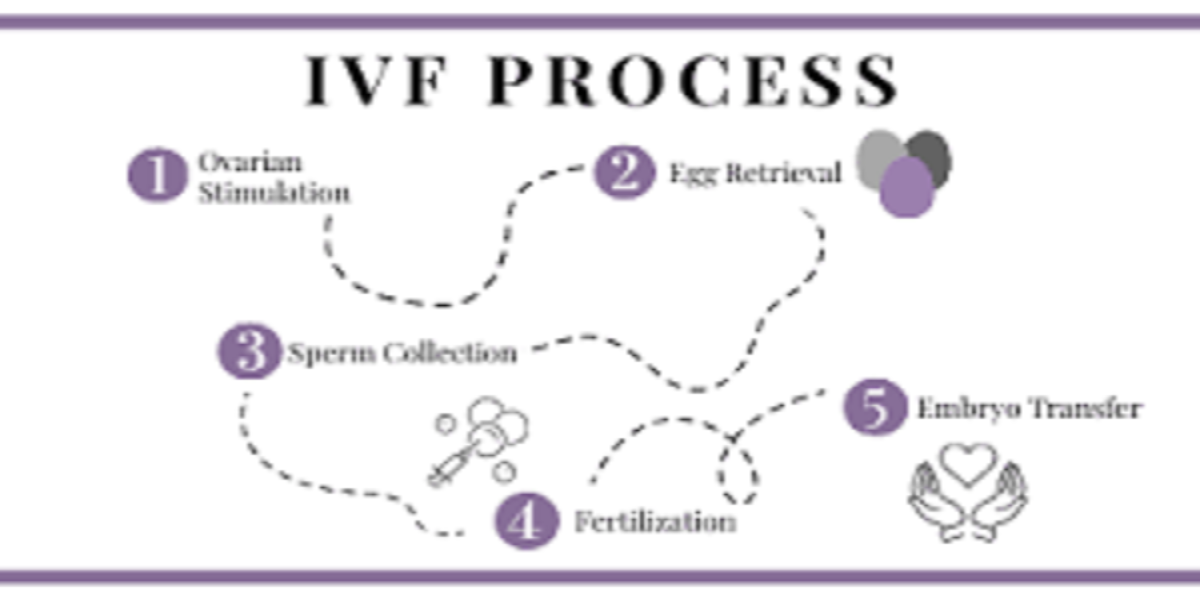Wanting to undergo IVF procedure and not sure how it works and when exactly should you consider it? This article will help you know.
This article contains a comprehensive interpretation about IVF and how it works, when a couple should consider it, along with step by step IVF process briefing how long the procedure takes and when you can expect to become pregnant with IVF.
What is IVF?
In-vitro fertilization, otherwise called IVF, is a clinical procedure that is intended to assist conception in couples who are struggling to conceive naturally due to infertility. It involves inducing fertilization outside the woman’s body and transferring the fertilized egg (blastocyst embryo) back to the uterus to initiate a pregnancy.
IVF is an assistive reproductive technology (ART) that works to boost a woman’s pregnancy potential in spite of natural fertility decline as a result of aging. As women age, their likelihood of developing certain reproductive disorders and constant decline in fertility could deprive them from attaining a healthy pregnancy. And, it is exactly when IVF treatment turns up as an effective clinical technique to achieve pregnancy.
When Should You Consider IVF?
Doubtlessly, you are struggling to achieve pregnancy naturally and may want to consider an IVF center in Gurgaon to undergo IVF treatment. But, do you really need it?
Before you choose to undergo such complex pregnancy treatment, you get to conclude whether you really need the treatment or other straightforward treatments could work too. You should consider IVF if you have: blocked uterine tubes, endometriosis, fibroids, polycystic ovary syndrome (PCOS), premature ovarian failure (POF), low egg reserve, ovulation irregularities or other similar reproductive disorders.
IVF Process: Step by Step
IVF is not a straightforward come-and-go treatment, it is a set of multiple procedures. A normal IVF cycle from start to finish may be as long as 6-8 weeks. Below is the complete IVF process, step by step.
Step 1: General Consultation
IVF is a complex process and before you conclude to undergo the procedure, it is important that your fertility doctor makes certain that you are an ideal patient for the treatment. IVF treatment generally starts with a normal consultation meeting where the doctor studies your reproductive history, asks certain questions about your current reproductive health, conception attempts and relevant treatments you have taken if any, as well as order necessary preconception tests.
Step 2: Preconception Checkup
During consultation, fertility doctors usually order some preconception check ups such as blood tests and ultrasounds to assess your overall reproductive health including ovarian reserve check, reproductive function check, and the presence of reproductive disorders and abnormalities. On the basis of test results, IVF treatment further continues.
Step 3: Ovarian Stimulation and Oocyte Maturation
It is where the IVF process actually starts to take place. Injectable fertility drugs such as follicle-stimulating hormone (FSH) and luteinizing hormone (LH) are administered for 10-12 days to stimulate ovarian follicles and trigger ovulation. As well as, enhance oocyte (developing egg) maturation in the ovarian follicles. Fertility doctors keep track of the egg development through regular transvaginal ultrasounds, and on day 13, women are given a single-shot of human chorionic gonadotropin (hCG) to induce ovulation and cause eggs to release.
Step 4: Egg Retrieval
After multiple mature eggs release from ovaries, fertility doctors use a tiny needle connected to a suction device to collect them.
Step 5: Sperm Retrieval
Post egg retrieval, doctors also collect male partner’s sperm. The collected sperm is then washed and concentrated to get the healthiest sperm for fertilization.
Step 6: Fertilization
As egg and sperm retrieval takes place, the doctor fertilizes the eggs with the intended father’s sperm in a laboratory, on a dish. Then, these fertilized eggs are incubated in an incubation device where they are kept for around 5 days until the eggs grow as healthy embryos (the blastocysts).
Step 7: Embryo Transfer
After the embryos make it to blastocyst, they are checked for chromosomal and genetic abnormalities and only the one with most potential to result in a healthy pregnancy is proceeded for embryo transfer (implanting the embryo back to woman’s uterus). With aging, the risk of chromosomal and genetic abnormalities increase in embryos and good fertility clinics like Grace Fertility use technologies such as chromosomal and genetic screening to identify any abnormalities in the incubated embryos.
Step 8: Pregnancy Check
Now comes a 2-week wait after embryo transfer. Once the embryo implants successfully and the pregnancy initiates, the doctor performs a blood test to assess hCG levels and confirm the pregnancy. If hCG levels are anywhere above 100 mIU/mL, it indicates a healthy pregnancy whereas levels below 5 mIU/mL indicates a negative result.
Conclusion
IVF is doubtlessly one of the most effective clinical pregnancy treatments, an ART that could help infertile couples have a chance to start a family. But, as an infertile couple, do you always need IVF to have a child? Absolutely not. Always consult a good fertility doctor before undergoing such treatments, knowing if you really need IVF or other straightforward treatments can still achieve the same results.

